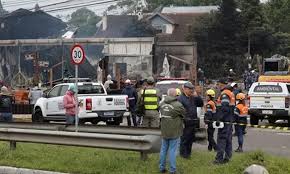Wrong Lane, No Return: The BR-251 Tragedy That Should Never Have Happened
On an otherwise quiet Tuesday night, the BR-251 highway near Grão Mogol, in Northern Minas Gerais, became the site of a national nightmare. What should have been an unremarkable stretch of road transformed, in seconds, into a corridor of carnage.
By dawn, nine lives were lost. Twelve more were injured. And a country was once again left asking: how did this happen?
The answer, chilling in its clarity, reveals that this was not just a tragic accident—it was a preventable disaster years in the making.
A Fatal Impact—and a Pattern in the Wreckage
At the heart of the catastrophe was a head-on collision between a van and a truck. The van carried workers returning home to Ceará. For many, it was the final leg of a long journey. They never made it.

Initial findings from the Civil Police of Minas Gerais (PCMG) have now confirmed what many feared: the truck was traveling in the wrong lane at the time of the crash. The violent impact left no room for evasive action. It was direct. Absolute. Unforgiving.
Tire marks. Drag patterns. Deep grooves in the asphalt. Forensic evidence has painted a picture as clear as it is horrifying: the truck’s deviation was not momentary—it was sustained and catastrophic.
“This was the determining factor,” said expert investigator Hugo Leonardo. And it wasn’t just a deviation in direction—it was a deviation in duty.
Lives Lost, Voices Silenced
The names and stories of the victims are still emerging. Parents. Workers. Sons. Daughters. People who boarded that van with plans for tomorrow. The tragedy is not only statistical—it is personal, etched into the grief of families who answered late-night phone calls and now face a life forever divided by “before” and “after.”
Twelve survivors now recover in hospitals, their bodies bearing witness to trauma. The emotional toll will outlast the physical wounds.
Was It Just One Driver’s Mistake? Or a Systemic Failure?
The investigation continues, but early findings have reignited discussions around Brazil’s highway infrastructure, driver fatigue, and the enforcement (or lack thereof) of road safety laws. Questions are swirling:
Was the truck driver overworked?
Was there a mechanical failure that should have been caught earlier?
Could better highway lighting or signage have made a difference?
These are not just procedural details—they are the cracks through which future lives may be lost if left unaddressed.
Conclusion: A Tragedy That Demands More Than Mourning
What happened on the BR-251 is a heartbreaking testament to how quickly a normal day can dissolve into disaster. But it’s more than just heartbreak—it’s a call to action.
Nine people died not because of chance, but because of a clear, preventable breach of safety.
As authorities finalize their findings and families prepare funerals, the rest of us are left with a duty of our own: to demand safer roads, stronger regulations, and zero tolerance for reckless driving.
Because behind every traffic rule, behind every reflective sign or faded yellow line, there is one simple truth: these measures exist to protect lives.
And when they fail—or are ignored—the cost is paid in blood.
